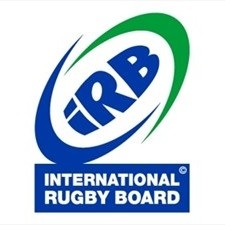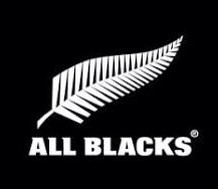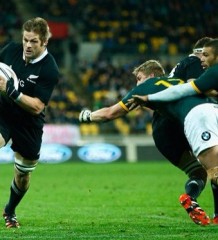Rugby: A proactive stance on concussion

Concussion is an issue that affects all sports and it is important that everyone in rugby recognises the symptoms of concussion and removes from playing or training any player with clear or suspected symptoms.
Player welfare is the number-one priority for the IRB. This is not something we say lightly but rather a strategy that informs and guides every aspect of what we do. Without healthy players who are confident they are playing a safe sport, rugby would not experience the success and global growth that it currently enjoys.
As the governing body, the IRB applauds the significant role that the media is playing in raising awareness of concussion and the need for all involved in rugby to take this important area seriously. However, we also would like to provide reassurance that concussion is at the very top of our player welfare agenda and that we are committed to driving forward evidence-based education, prevention, management and research strategies that are enhancing protection of players at all levels of the game.
While there are risks associated with any sport – and rugby is no different – we want to reassure players, parents and fans that we are working hard with our national unions, including the IRFU, to educate players at all levels of the game regarding the symptoms and dangers of concussion and to follow the correct procedures as outlined at irbplayerwelfare.com.
It is true that concussion is an emotive issue and that in very rare and sad cases it can be fatal, but it is important that everyone understands how, collectively, we are tackling the issue.
So, what are we doing about it? Well, the most important thing at all levels of the game, is education and our message to all levels of the game is simple – recognise and remove.
#RecogniseandRemove
If any player demonstrates any signs or reports any symptoms of possible concussion, that player must be removed from the game and must not return to play. That is non-negotiable and we are making good progress in educating players and coaches to make sure this is happening in practice from Eden Park or the Aviva Stadium right down to schools’ playing fields and the back pitches at your local club.
There is no such state as ‘a little concussed’ and rugby therefore exercises caution. Concussion is a complex injury and it is not always possible to diagnose it immediately. So we treat suspected concussion exactly the same as confirmed concussion. Get the player off the pitch, and don’t let him or her back on.
Before that player can play again, he or she must undergo a medically supervised graded return-to-play protocol to make sure the brain has fully recovered from the knock it received. If a player does not have access to medical supervision, a mandatory stand-down period applies. This is highlighted in the IRB’s concussion guidance document for the general public where the advice is simple: Any child or adolescent who suffers a concussion should not return to contact sport or playing for a minimum of two weeks following cessation of symptoms.
At the elite level of the game, we have introduced another protective measure, known as the Pitch-side Suspected Concussion Assessment (PSCA). The PSCA tool is often misreported as means of diagnosis of concussion. It is impossible to make a clinical diagnosis of concussion in 10 minutes and therefore the PSCA is designed to assess a player following a head knock when the diagnosis is not apparent.
At the elite level of the game, we have experienced doctors who have undertaken extra training in concussion management and they are instructed to remove all players if they exhibit signs or symptoms of concussion. The medical staff are also advised to remove all players who have a suspected concussion. Use of the PSCA is limited to situations where the diagnosis is not immediately apparent.
Reports from medical staff and players confirms that the value of this intervention is the allowance of a temporary removal from play so that a head injury assessment where the diagnosis is not apparent can be undertaken. Prior to the introduction of this temporary substitution, the assessment of a player was completed within one minute, on the field of play.
#RecogniseandRemove
This resulted in 56 percent of players with confirmed concussion returning to play. Since the introduction of temporary substitution and standardised assessments, this figure has reduced to 13 percent. This research has been independently reviewed and has been approved for publication by the British Journal of Sports Medicine.
It is common-sense that more time for team doctors in a less stressful environment provides players with greater protection. Research has also assisted in this area identifying where the system can be improved and offer greater protection for players. The goal of the IRB is to drive this 13 percent down to zero.
Importantly, the IRB’s approach also comes with the full support of the International Rugby Players’ Association and it’s clear the players’ attitude to this is changing for the better.
Unfortunately, like all these things, incidents can and do go wrong. Sometimes, players are allowed to return to play when the developed criteria clearly identify that the player should have been permanently removed, the recent Florian Fritz incident in the French Top 14 being an example. In many instances the protocols for permanent removal are not at fault but rather the apparent non-application of the protocols. The French Federation, supported by the IRB, is investigating this particular incident.
The pitch side assessment has reinforced the fact that education and cultural change are key to protecting our athletes. Players, coaches and parents at all levels must understand the dangers of concussion and the need to put the welfare of the player at the heart of all they do.
Any time cultural change is required, the process is never quick. But it is possible. It used to be socially acceptable to drink and drive but that is not the case any longer. And it used to be acceptable within sport to return to play even though you’d had your “bell rung”. This, too, is changing as the full short-term and long-term dangers associated with concussive head injuries come to light.
Concussion is a brain injury. It is serious stuff. It is not to be taken lightly. It is a complex subject and the IRB is engaged in research with Auckland University of Technology to learn more about the long-term effects of concussion and we are actively engaged with the Zurich Consensus Statement on Concussion in Sport.
Rugby takes head injuries seriously, which is why the Laws of the game outlaw any challenges above the shoulders. We have recently changed the scrum-engagement process to reduce the impact of the hit and referees at all levels are instructed to be particularly strict when it comes to infringements related to the head or neck.
The message from the IRB is simple – Recognise and remove. Recognise the symptoms of concussion (which can be found at irbplayerwelfare.com) and permanently remove a player displaying any of those symptoms. Working together with players, coaches, administrators, medics, scientists, the media and supporters, we can ensure the welfare of those who take the field at all levels of the game is protected.
This article first appeared in the Irish Daily Mail.
Courtesy of IRB.
Related Posts
« England prepared for huge battle – Walshe JWC2014: NEW ZEALAND TEAM TO TAKE ON SOUTH AFRICA »




















